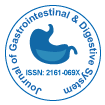Unsere Gruppe organisiert über 3000 globale Konferenzreihen Jährliche Veranstaltungen in den USA, Europa und anderen Ländern. Asien mit Unterstützung von 1000 weiteren wissenschaftlichen Gesellschaften und veröffentlicht über 700 Open Access Zeitschriften, die über 50.000 bedeutende Persönlichkeiten und renommierte Wissenschaftler als Redaktionsmitglieder enthalten.
Open-Access-Zeitschriften gewinnen mehr Leser und Zitierungen
700 Zeitschriften und 15.000.000 Leser Jede Zeitschrift erhält mehr als 25.000 Leser
Indiziert in
- Index Copernicus
- Google Scholar
- Sherpa Romeo
- Öffnen Sie das J-Tor
- Genamics JournalSeek
- Nationale Wissensinfrastruktur Chinas (CNKI)
- Elektronische Zeitschriftenbibliothek
- RefSeek
- Hamdard-Universität
- EBSCO AZ
- OCLC – WorldCat
- SWB Online-Katalog
- Virtuelle Bibliothek für Biologie (vifabio)
- Publons
- Genfer Stiftung für medizinische Ausbildung und Forschung
- Euro-Pub
- ICMJE
Nützliche Links
Open-Access-Zeitschriften
Teile diese Seite
Abstrakt
Metagenomic Study of the Liver Microbiota in Liver Cancer-Metagenomic and Metatranscriptomic Analyses of the Hepatocellular Carcinoma- Associated Microbial Communities and the Potential Role of Microbial Communities in Liver Cancer
Asmaa Ezzat, Mohd Noor Mat Isa, Irni Suhayu Sapian, Zeinat Kamel, Abd ElHady Abd ElWahab, Ekram Hamed and Mahmoud ElHefnawi
Objective: Metagenomics is a new science that revolutionized microbiology for its ability to study the microbiota of a given environment without the need of culture. Human microbiota is the collection of microbes that inhabit different sites of the human body and recently its alterations were related to different human diseases especially cancers. Liver cancer incidence is continually increasing in Egypt with a high mortality rate. This study aimed to identify the abundant microbial communities that inhabit the liver of the hepatocellular carcinoma patient and may be associated with disease incidence or at least disease progression.
Methods: Fresh liver biopsy samples of two hepatocellular carcinoma Egyptian patients were obtained. DNA from one sample and RNA from other sample were extracted followed by Illumina sequencing. Taxonomic and functional analyses were performed using the MG-RAST server.
Results: Proteobacteria was the dominant phylum followed by Firmicutes and Actinobacteria in both DNA and RNA samples. Some other phyla as Chlorobi, Bacteria and Cyanobacteria had the same abundance in the two dataset. But it was noted that the bacterial diversity and presence of useful bacteria in sample 2 of grade 1 disease (RNA sample) were more than it in sample 1 of grade 2 disease (DNA sample). Also, some other phyla are found in the cDNA dataset annotations. On the other hand, infectious diseases pathways analysis showed the enrichment of infectious diseases pathways of Staphylococcus aureus infection, Vibrio cholera infection, pathogenic Escherichia coli infection, Hepatitis c, Tuberculosis, Epithelial cell signalling in Helicobacter pylori infection, Bacterial invasion of epithelial cells, and salmonella infection.
Conclusions: There is a potential link between some definite microbial communities and liver cancer that need some attention for improving early diagnosis and preventing disease progression. Further studies are required to support this
Zeitschriften nach Themen
- Allgemeine Wissenschaft
- Biochemie
- Chemie
- Genetik und Molekularbiologie
- Geologie und Geowissenschaften
- Immunologie und Mikrobiologie
- Klinische Wissenschaften
- Krankenpflege und Gesundheitsfürsorge
- Landwirtschaft und Aquakultur
- Lebensmittel & Ernährung
- Maschinenbau
- Materialwissenschaften
- Medizinische Wissenschaften
- Pharmazeutische Wissenschaften
- Physik
- Sozial- und Politikwissenschaften
- Umweltwissenschaften
- Veterinärwissenschaften
Klinische und medizinische Fachzeitschriften
- Anästhesiologie
- Augenheilkunde
- Betrieb
- Dermatologie
- Diabetes und Endokrinologie
- Gastroenterologie
- Genetik
- Gesundheitspflege
- Immunologie
- Infektionskrankheiten
- Kardiologie
- Klinische Forschung
- Medizin
- Mikrobiologie
- Molekularbiologie
- Neurologie
- Onkologie
- Pädiatrie
- Pathologie
- Pflege
- Toxikologie
- Zahnheilkunde

 English
English  Spanish
Spanish  Chinese
Chinese  Russian
Russian  French
French  Japanese
Japanese  Portuguese
Portuguese  Hindi
Hindi